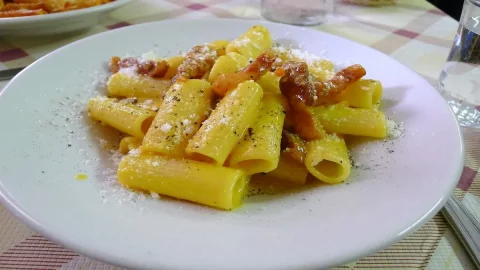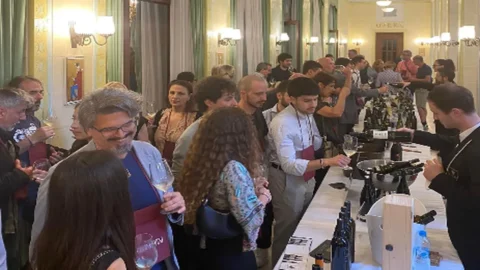There is no longer any limit to gastronomic horrors that offend the great tradition of Italian culinary culture and its iconic products that have made Made in Italy famous throughout the world. After the pineapple pizza, a real scar on what was rightly elected by UNESCO as an intangible heritage of humanity, now comes the Synthetic Chicken Carbonala: un double affront. First of all, to the identity of a dish of the Italian gastronomic tradition among the most loved in the world, to the point that a Carbonara Day has been dedicated to it, rigorously celebrated on 6 April in all continents for seven years now on a proposal from the Unione Italiana Food and the International Pasta Organization. But also insult to taste for the combination with a synthetic meat generated in a test tube that has little to do with the flavors and tastes of the homeland of Mediterranean cuisine. Now only spaghetti with jam is to be expected, and maybe that's not a boutade.
The "crime" committed in a Singapore restaurant, but the agro-piracy of Italian cuisine is practiced all over the world
La distortion of Italian recipes has become a fantasy horror at the table in which everything seems permitted from carbonara with cream or béchamel to tiramisu without mascarpone, from seed oil for the Milanese cutlet alla caprese served with industrial cheese instead of buffalo mozzarella or fiordilatte up to pizza in the most unimaginable and inedible versions , from the one with pineapple to the one with chicken. Coldiretti on the occasion of the national assembly in Rome where the first exhibition of false Italian cuisine was opened, launched a real alarm against the tourist trap menus spread across all continents that scar the dishes of the national tradition, put on the table and unmasked for the occasion with the help of expert peasant cooks for the focus on the candidacy for UNESCO intangible heritage of Italian cuisine and its impact on the economy, work, health and tourism.
True Italian cuisine is threatened in the world by a dark forest of fake or at least improbable recipes with 60% of Italian tourists found on their plate macaroni with cheddar, spaghetti with meatballs, rigatoni with chicken and pesto, pasta with pesto proposed with almonds, walnuts or pistachios instead of pine nuts or spaghetti Bolognese with meat sauce and parsley popular all over the world except in the Emilian city.
The damage caused to the Italian agri-food sector by international agro-piracy against Italy is estimated at 120 billion euros.
The lack of clarity on Made in Italy recipes unfortunately offers fertile ground for proliferation of fake Italian food products abroad where exports could triple if there is a stop to international food counterfeiting which is the cause of economic damage, but also of image. The president of Coldiretti Ettore Prandini quantified the damage caused to the Italian agro-food sector by international agro-piracy against Italy in the amount of 120 billion euros. At the top of the ranking of the most fake products, even with names and graphics that recall Italy, there are cheeses starting from Parmigiano Reggiano and Grana Padano with the production of copies that has exceeded that of the originals, from Brazilian parmesao to Argentine reggianito up to parmesan spread across all continents. But there are also imitations of Provolone, Gorgonzola, Pecorino Romano, Asiago or Fontina. Among the cured meats, the most prestigious are cloned, from Parma to San Daniele, but also mortadella Bologna or salami cacciatore and extra virgin olive oils or preserves such as San Marzano tomatoes. But among the "horrors at the table" there is no shortage of wines, from Chianti to Prosecco which is not only the PDO in first place in terms of production value, but also the most imitated.
the president of Coldiretti Ettore Prandini calls for concrete measures: "To support the growth trend of true Made in Italy, we now need to act on Italy's structural delays and unblock all the infrastructures that would improve connections between the south and north of the country, but also with the rest of the world by sea and high-speed rail, with a network of hubs made up of airports, trains and cargo. It's important also work on internationalization to support companies that want to conquer new markets and strengthen consolidated ones enhancing the strategic role of the ICE and with the support of the embassies. The goal is grow agri-food exports from the current 61 billion to 100 billion in 2030”.





